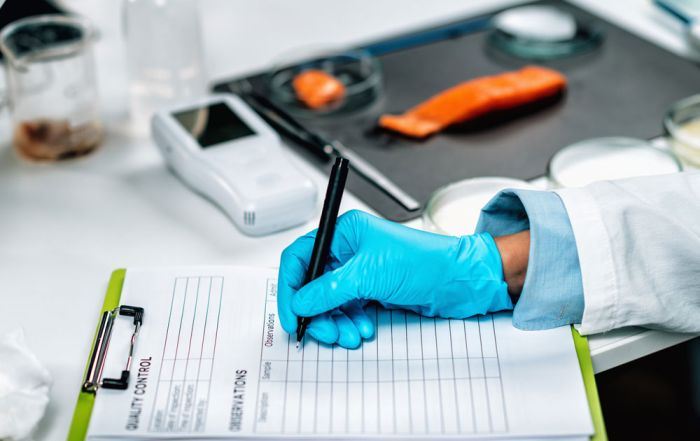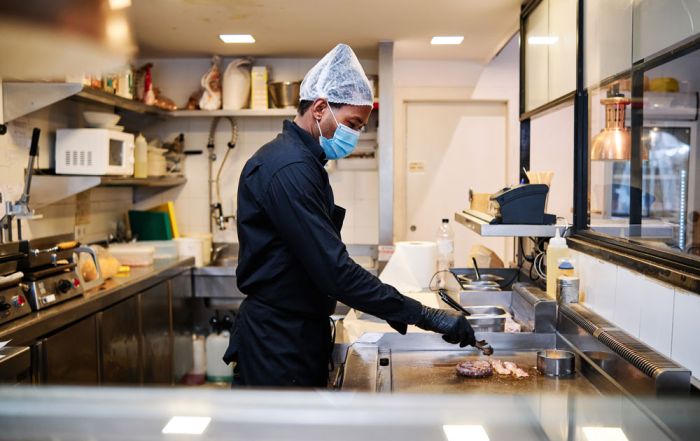Food Packaging Safety in a Vacuum
 Extending the shelf life of fresh foods has come a long way in the food industry since curing meats with salt and sugar or canning vegetables with heat processing. The food service and consumer markets needed some better visual packages to draw the eye to the freshness factor and the technology of food packaging has filled our dinner plate. Vacuum packaging and modified atmosphere packaging, shortened to “MAP”, are the terms used for the method of food packaging used every time we choose convenience over more complex scratch meal preparation. According to industry statistics, billions of packages of vacuum and MAP-packaged foods flood the marketplace today. In both modified-atmosphere and vacuum packaging, food is packaged in a pouch made of barrier film.
Extending the shelf life of fresh foods has come a long way in the food industry since curing meats with salt and sugar or canning vegetables with heat processing. The food service and consumer markets needed some better visual packages to draw the eye to the freshness factor and the technology of food packaging has filled our dinner plate. Vacuum packaging and modified atmosphere packaging, shortened to “MAP”, are the terms used for the method of food packaging used every time we choose convenience over more complex scratch meal preparation. According to industry statistics, billions of packages of vacuum and MAP-packaged foods flood the marketplace today. In both modified-atmosphere and vacuum packaging, food is packaged in a pouch made of barrier film.
- In modified-atmosphere packaging, the headspace (vacant area) of the pouch is flushed with gases that prolong the shelf life of the item.
- In vacuum packaging, air in the headspace is vacuumed out, extending shelf life by preventing oxidation and inhibiting microbial growth. Thicker, high-barrier films used in the vacuum packaging process restrict the passage of gases.
- Cold holding at 41°F or below is always required as a food safety barrier for potentially hazardous foods in this specialized packaging, unless the food is acidified by the commercial food processor.
MAP packaging allows processors and distributors to provide food that is fresh, convenient, and often less labor-intensive than traditional foods. The leader in the MAP foods category is fresh, ready-to-use vegetables, such as bags of pre-trimmed, pre-washed salad greens, or packages of washed, sliced mushrooms. Or, consider dip-ready celery sticks, mini carrots, and broccoli. Other examples of popular MAP foods include the combination cheese and cracker snacks, fresh pasta, soups, sauces, fresh pizzas, grated cheese, sandwiches, and meats.
MAP Convenience & Food Safety vs. Labor Cost — Like general consumers, foodservice operations enjoy the convenience of MAP foods. Quick service restaurants were the early users of MAP packaged lettuce. Some foodservice managers compare the added cost of buying pre-prepped vegetables with the labor cost of in-house prep. They choose “ready” produce as a way to contain the budget and extend productivity of the crew. A huge food safety benefit is in there too. Less hands preparing and portioning MAP foods might lower the risk of contaminating ready-to-eat foods. At home, the average consumer spends 2 ½ hours less today than a few decades ago in the task of meal preparation. That’s good for the food service industry. MAP foods not only save prep time, but they also last longer in the refrigerator. In all, MAP packaging boosts storage life by two-to-five times.
FDA Regulations for Reduced Oxygen Packaging—Here’s a few more acrynoms and warnings. The FDA Food Code has very specific requirements on MAP and vacuum packaging in Chapter 3-502 and refers to the process as “reduced oxygen packaging (ROP).” A HACCP (Hazard Analysis Critical Control Point) plan with at least two barriers to prevent microbial growth is required to use reduced oxygen packaging. Packaging might even prove a life-or-death issue. For example, fresh fish cannot be packaged using MAP because of the concerns for formation of Botulism toxin or growth of Listeria monocytogenes – both potent foodborne pathogens. FDA regulations dictate packaging in a pouch labeled for a very specific oxygen-transmission rate. Putting certain products in an unsuitable film with a lower-than-specified oxygen-transmission rate, such as those used for beef and pork, could allow toxic microbial growth. Food manufacturers have that technology and restaurants typically do not. For regulatory details, read this section of the Food Code: http://www.cfsan.fda.gov/~acrobat/fc05-3.pdf
What exactly is MAP packaging? In this process, a mixture of gases replaces the ordinary air in the food package. No magic recipe dictates the gas mix. Instead, food technologists decide on a mix and packaging solution for each individual product. In itself, applying MAP technology is a science. Three gases used in MAP are: carbon dioxide, nitrogen, and — on a limited basis — oxygen. In general, technologists use the carbon dioxide to replace oxygen. This creates a low-oxygen environment, where many foodborne pathogens cannot thrive. The low-oxygen environment also inhibits spoilage by preventing growth of molds and yeasts. Nitrogen likewise serves to displace oxygen. It’s also a “filler” gas. For example, a package of salad needs to stay “puffed up” to protect fragile greens. Nitrogen helps maintain this mechanical protection. Oxygen enters the picture as a way to improve food appearance and typically appears in a MAP food at a proportion of 1-5%. Red meats, for example, need some oxygen to look red and appeal to consumers.
Bottom Line: Shelf-stable prepared products increasingly play a significant role in every aspect of the food industry. This packaging technology has gone a long way to improve our food safety, quality, and convenience and lessen food waste.
***
About the Author: Lacie Thrall

This information is provided as a general guideline and is not intended to be, nor does it, constitute legal or regulatory advice. Additional Federal regulations may apply to your particular circumstances. State, regional and local laws, ordinances and regulations may also apply.
READ MORE POSTS
Hot off the Press: The 2022 Model Food Code has been Released! Part One.
It has finally arrived! Yes, the new year has arrived – but I was not referring to it. I was referring to the new 2022 Model Food Code (10th edition) that has been released by the Food and Drug Administration. I thought I might take this blog and the next blog to discuss some of the changes that have been made to the Food Code that you might see coming your way in the next few years.
Is a Food Safety Culture on your New Year’s Resolutions List?
We hope you all had a wonderful Holiday season and are getting ready for a great new year!
Don’t Underestimate the Importance of Employee Health as we head into the Winter Months
Early this month, I ran across an article discussing an outbreak investigation in the Australian Capital Territory. The outbreak caused more than 200 people to fall ill and was one of the most widespread outbreak investigations in the history of the territory. The cause was traced back to Norovirus, a virus I am sure you have heard us opine about in this blog before.
Exclusion and Restrictions: Understanding Employee Health and the Food Code
I received a call earlier in the month from a foodservice operator who suspected that one of their employees may have fallen ill and wondered if they had to send the employee home for the day. Once I started to ask a few more questions, it became obvious that the operator wasn’t really in-tune with the food code requirements on restrictions or exclusions for employees who may not be feeling well. Given that most operations are dealing with staff shortages currently and the fact that we are about to head into the fall and winter – when we tend to see an increase in upper respiratory and other illnesses, such as the flu - it seemed like a very timely and important topic for the blog this month.










